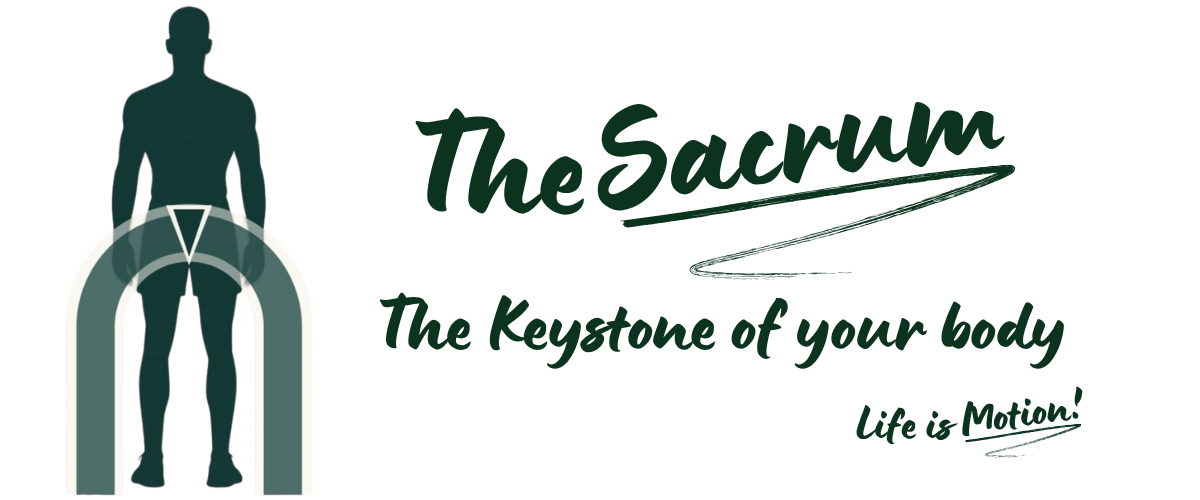

Your body is great at hiding where the real problem is.
And more often than not, it leads back to your pelvis—even if that’s not where you feel the pain.
Let’s break this down::
But first understand that your pelvis isn’t the same thing as your hip.
So when I talk about pelvic mobility, I’m not just talking about your hip joint.
I’m talking about how the entire pelvic structure moves, especially at the SI joints—where your sacrum (the upside down triangle at the bottom of the spine) connects to each side of your pelvis.
In my practice as a Myopractor, I’ve seen this scenario over and over again:
Someone comes in with shoulder pain, neck tension, or even foot discomfort…
And often the real issue?
A restriction in one or both of their SI joints.
Think of your lower body like an ancient arch.
In architecture, an arch is only stable because of the keystone—the wedge-shaped stone at the very top that locks everything into place.
In your body, the sacrum is that keystone.
The SI joints on either side are where the arch extends down into your legs.
If the sacrum isn’t moving properly, the whole structure above and below it is affected.
The body is amazing in it's ability to adapt and compensate to keep you upright.
But that compensation comes at a cost.
Let’s say your right SI joint is restricted.
Here’s one common pattern I see:
This isn’t just theory.
This is what I see in real bodies, every week.
Even if you don’t have scoliosis, your spine can start to behave like the Leaning Tower of Pisa—except your body adapts and compensates to keep you upright.
And when that happens, you might feel it in:
There’s a concept called biotensegrity that helps explain this.
It’s the idea that your body is a tension-based structure—like a suspension bridge or a tensegrity model.
When one area is under tension, it pulls on everything else.
Here are a few simple ways to start improving pelvic mobility and stability on your own:
1. Pelvic Tilts
Lie on your back with knees bent.
Gently draw your belly button in towards the floor hold for a few seconds and then raise it towards the ceiling.
repeat 10-20 times
This helps reintroduce motion into the sacrum and lumbar spine.
2. Kegels
Yes, these are for men too.
Locating the right muscles: Imagine you’re trying to stop the flow of urine midstream or hold in gas. The muscles you engage to do that are your pelvic floor muscles.
Gently squeeze and lift those muscles. Avoid tightening your stomach, thighs, or glutes—just focus on the pelvic floor.
Hold for about 3 to 5 seconds, then fully relax for the same amount of time.
Aim for 10 reps per set, and try to do 2 to 3 sets throughout the day.
Strengthening your pelvic floor helps stabilize the sacrum and support better movement.
3. Bridges
Lie on your back with knees bent and feet flat on the floor, hip-width apart.
Press through your heels to lift your hips off the ground (raise it not higher than the point where your body forms a straight line from shoulders to knees). Hold for a second at the top, then lower down with control.
Aim for 10–15 reps per set and work your way up to 2–3 sets.
Strengthens the glutes, hamstrings, and core; promotes pelvic stability; improves hip mobility; and supports better posture and lower back health.
As a Myopractor, I specialize in full-body mobilization—but I always start with the pelvis.
Because if the foundation isn’t moving well, nothing else will hold.
The full body approach starting with the pelvis is why myopractic sessions tend to get better, longer-lasting results.
We’re not just chasing symptoms—we’re restoring proper mobility to the structure.
So whether you’re dealing with shoulder tension, low back discomfort, or just want to move better…
Start with your sacrum.
It’s the keystone of your body.
And when it moves well, everything else has a chance to move better too.
Jason Alston
Myopractor/Movement Specialist
